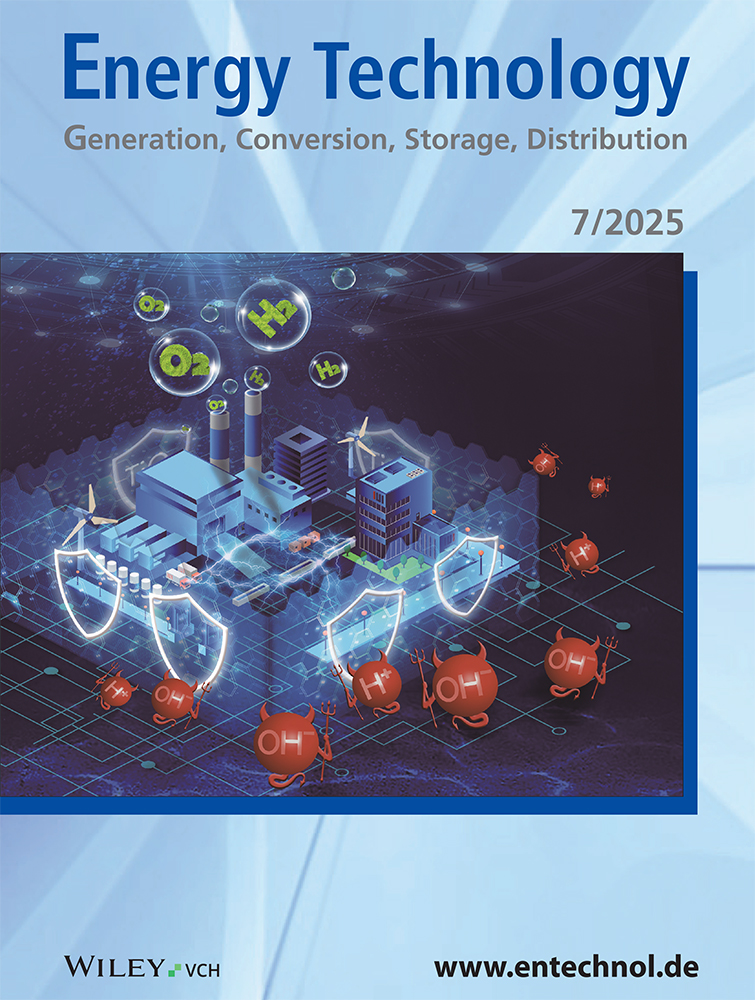Optimized Mixed Halide Triple Cation Perovskite Based Indoor Photovoltaic Device Architecture with Ultrahigh Open Circuit Voltage and Efficiency > 42%
Abstract
Indoor photovoltaics have attracted greater interest in applications of Internet of Things (IoT) devices. Herein, using the SCAPS 1D software, the output characteristics of photovoltaic devices utilizing Cs0.08(MA0.17FA0.83)0.92Pb(I0.83Br0.17)3 are comprehensively investigated, denoted as PVK, with a bandgap of 1.76 eV, as an active layer under light-emitting diode (LED) excitation of 3 W m−2. For the optimization, various materials such as C60, PCBM, SnO2, TiO2, and WS2 as electron transport layer (ETL) and Cu2O, PEDOT: PSS, Spiro-OMETAD, NiO, and CuI as hole transport layer (HTL) are used. Parameters including the thickness and doping density of all layers, absorber defect density, the interface defect density of ETL/PVK and HTL/PVK, and the device's series and shunt resistance are optimized. The optimized device of FTO/SnO2/PVK/Cu2O/Au exhibits the highest PCE of 42.62%, with VOC of 1.27 V. Further, the simulations demonstrate that as the incident power (Pin) increases from 0.3 to 10 W m−2, the VOC increases from 1.13 to 1.31 V, highlighting the importance of stable VOC over photocurrent for practical IoT applications. This study contributes to the experimental development of high-efficiency PVK indoor photovoltaics.
Conflict of Interest
The authors declare no conflict of interest.
Open Research
Data Availability Statement
The data that support the findings of this study are available from the corresponding author upon reasonable request.




